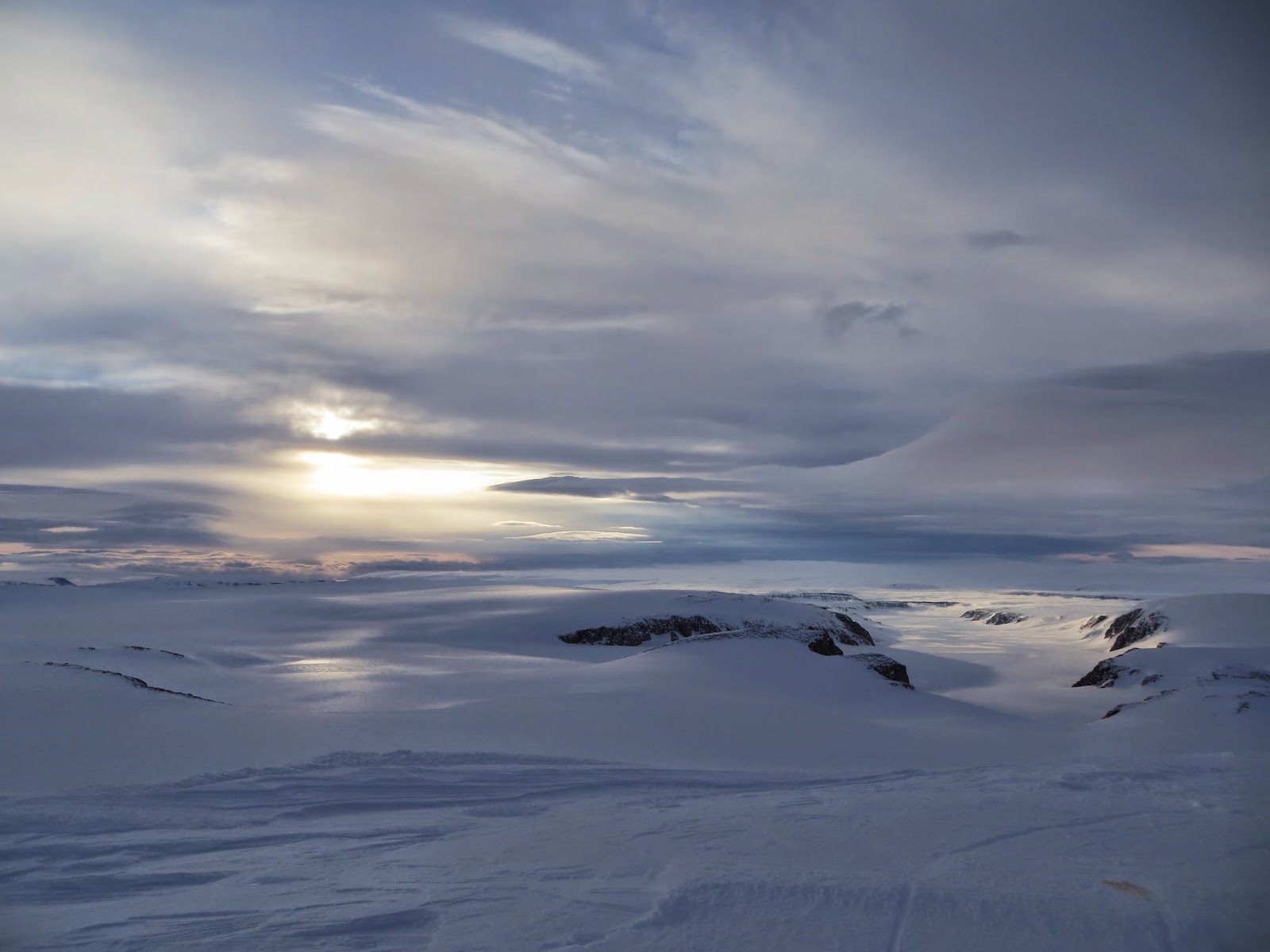You could call this a procrastination blog entry….Or just the attempt to summarise 10 months being in the Arctic.
It
is late May now and we are in the middle of our exam period. Two days ago,
Luci and I wrote our Arctic Environmental Management exam
covering all the political, economical and environmental issues up
here. Believe me, they are uncountable! Just start from Russia setting
up their flag at the seabottom right at the North Pole in 2007 in the
attempt to claim the area and all the resources
that can be found there, go to pollutants that are not even produced in
the Arctic but are carried along with winds and ocean currents from
industrialized areas and accumulate in marine fauna and flora which even
goes up in the food web to the human so that
inuits are highly affected by these without even intentionally using them; or just
think about the sea-ice loss due to global warming which opens up the
Arctic Ocean to a) even more overexploitation of the fish stocks, b)
mineral resources like oil and gas (which is clearly
the winner in international economic conflicts) and c) new shipping
routes so that e.g.
container ships going from Europe to China could save more than 4,000nm of their usual way (~11,000nm).
Complicated but interesting.
But
let’s look back to the last 10 months. Allan, Esty, Luci and I arrived
in August 2013 and could experience all of the fall semester including
the snow-free Arctic, the first snowfall, the first sunset after Polar
day and the last sunset before Polar night, northern lights, the Polar
night of 24 hour darkness and proper cold temperatures. But you might
have read about these experiences earlier.
This
semester, when we came back in January, Rachel was with us as well. It was warm! Melting! Actually,
in January and February this year, it was on average 15°C warmer than
in the last couple of years. (Yes, 15, one five, no typo there). Actually it got never as cold as
what we could experience in december.
Daylight
came back slowly in February, hit Longyearbyen the first time early
March. And for a couple of weeks now, we are back to Polar Day. 24
hours of daylight and by now, it is not even getting slightly orange or
pink in the sky. I always thought that the Polar Night will be the difficult time. But what
the daylight does to you is very different. You don't get tired at all,
you can rather be happy when your body gets exhausted after a while.
You lose track of time easily. You change your routines - intentionally or
unintentionally.
 |
| first midnight sun ski tour (photo credits: Michael Lawrence) |
 |
| midnight sun at 1.30 am |
And then there are birds! All the migrating birds are coming back up to Svalbard for the summer season. It started slowly with a few sea gulls and little auks. Now, it is thousands of little auks, seagulls, cute snow buntings, pink-footed and barnacle geese and many more (I am not that bird person). Their "music" replaced the sound of the snow mobiles that are not much more longer able to travel the snow routes as the snow is disappearing very quickly going back to the snow-free Arctic that we've seen first when we came here.
However, we had a great snow season. My snowmobile survived - except for one major repair that had to be done - all season. I have made it to the east coast, Tempelfjorden, Barentsburg, Svea, Pyramiden and even to Newtontoppen (at the second attempt). That is the highest mountain in Svalbard (1713m) and this was so far the most stunning trip I could experience. We have done it overnight because it was a beautiful weather window plus the last chance for my best mate to make it before leaving Svalbard. The route took us over endless ice caps into the most stunning area. The last bit was quite steep, straight 500m up the mountain, but the scooters managed. And here, we were awarded with the most sensational view ever! It was perfect.
 |
| East coast in beautiful weather conditions |
 |
| Newtontoppen! We've made it (at 4 in the morning) |
 |
| Our way to Newtontoppen over huge ice caps into the sun |
 |
| what a view! |
I can very surely say that we all have experienced a lot of things we've not experienced before and also a lot of things we didn't even expect to happen to us. We went through literally every kind of emotion from a to z (can't think of any z-emotion though); covering positive as well as negative emotions.
I have 15 days left here. I am very sure that I will miss this place like hell but am also looking forward to focus now on my thesis so that I can come back as soon as possible!
Everybody comes back, Svalbard!
It was amazing! Purely amazing!
It was amazing! Purely amazing!
PS: Just like Luci: If there are any questions, please do not hesitate to send me a message. Facebook or e-mail: 11001178@uhi.ac.uk






























